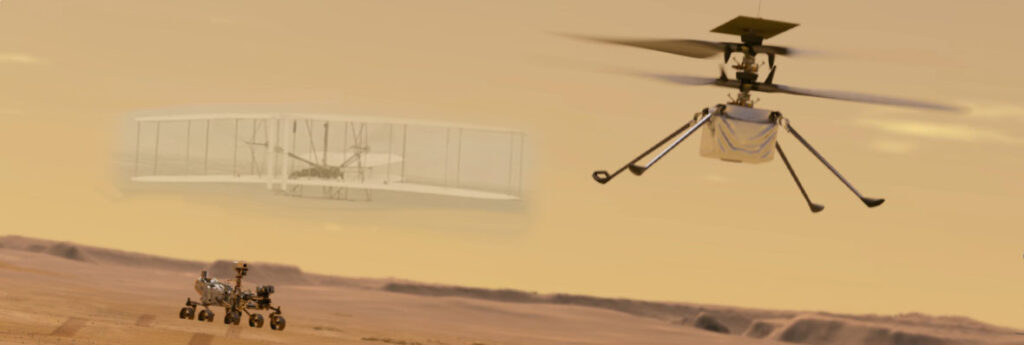Do you think brothers Orville and Wilbur could ever have imagined that their inaugural airplane, or at least a part of it, would make it to Mars? However, close to 120 years on from the launch of the famous “Wright Flyer,” NASA has revealed that a swatch of fabric from the plane is being carried by its Martian helicopter “Ingenuity.”
For its part, Ingenuity hitched a ride to the red planet with the Perseverance rover, arriving in February, and will attempt the first powered, controlled flight on another planet this week (April 8). It’s only fitting then that the historic moment in aviation should bear links to the Wright brothers’ similarly iconic first flight efforts in Dec. 17, 1903.
Ingenuity’s first flight will mark a “Wright brothers’ moment,” noted Bobby Braun, director for planetary science at NASA’s Jet Propulsion Laboratory.
The Carillon Historical Park in Dayton, Ohio, the Wrights’ hometown, donated the postage-size piece of muslin from the plane’s bottom left wing, at NASA’s request, and the swatch made the 300-million-mile journey to Mars with the blessing of the Wright brothers’ great-grandniece and great-grandnephew, said park curator Steve Lucht.
“Wilbur and Orville Wright would be pleased to know that a little piece of their 1903 Wright Flyer I, the machine that launched the Space Age by barely one quarter of a mile, is going to soar into history again on Mars!” Amanda Wright Lane and Stephen Wright said in a statement provided by the park.
Orville Wright was on board for the world’s first powered, controlled flight on Dec. 17, 1903, at Kitty Hawk, North Carolina. The brothers took turns, making four flights that day.
A fragment of Wright Flyer wood and fabric also flew to the moon with Apollo 11’s Neil Armstrong in 1969. A swatch also accompanied John Glenn into orbit aboard space shuttle Discovery in 1998. Both astronauts were from Ohio.
NASA’s 1.8-kilogram helicopter will attempt to rise three metres into the extremely thin Martian air on its first hop. Up to five increasingly higher and longer flights are planned over the course of a month.
The material is taped to a cable beneath the helicopter’s solar panel, which is perched on top like a graduate’s mortarboard.

